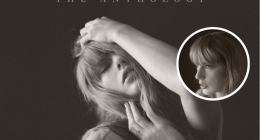Why You Should Watch Black Mirror Season 6 in Reverse Order? For example Micheal Smart, the Nigel Farage-like politician introduced in “Demon 79,” is featured on most of the front pages of the newspapers we see in “Loch Henry,” all of which reflect the future Gaap predicted for Smart back in 1979. Smart is also the subject of a documentary Joan and Krish scroll past on faux-Netflix site Streamberry in “Joan is Awful.” None of these references have any meaning on a first viewing of the season if the viewer has not yet watched “Demon 79.”
Why You Should Watch Black Mirror Season 6 in Reverse Order
Streamberry itself is another new addition to the Black Mirror universe. Although Netflix exists in this world and has been name-checked in both Bandersnatch and “Loch Henry,” the latter also introduces Streamberry as the company that produces Davis’s documentary. Streamberry then becomes a core part of “Joan is Awful.”
That also indicates that the two episodes set in a vaguely “current” or near-future time period actually take place in reverse order. The documentary Loch Henry: Truth Will Out is made and released over the course of the episode Loch Henry, and Joan and Krish decide not to watch it in Joan is Awful (flagging up the core idea of Loch Henry, there are too many true crime shows around, in the process). Admittedly, trying to watch Black Mirror in order is almost impossible as the timeline of its shared universe is almost incomprehensible and full of contradictions, and the other three episodes will take you from 1979 to 2006 to 1969 and then back to the future, but still, if you are a person who likes to watch things in chronological order, these two need to be reversed.
Also Read | 15 Billionaires Inherited Their Wealth From Parents or Spouses – Meet Them
Themes and Characters Make More Sense
The themes of the season also develop more naturally if you watch these episodes in the order they were written. “Loch Henry” for example, echoes a couple of themes from “Mazey Day” and from “Demon 79.” Davis’s Black American girlfriend Pia is subject to a lot of casual racism when she visits the rural Scottish village where he grew up, and we see even more overt examples of that in the treatment Nida is subjected to in Demon 79, the 1970s setting making the racism even more overt. Racism is not central to the plot of Loch Henry, making these references seem a bit tokenistic on their own. Seen as a further development of a driving theme from Demon 79, they fit the season more smoothly.
Pia also comments that she thinks maybe if the person stealing rare eggs “looked like [her]” the police would be more keen to pursue them, referring to the numerous instances of institutional racism in the police that sparked the Black Lives Matter movement. In Mazey Day, set back in 2006 before the movement took off, Bo and Hector, both people of color, burst into a diner and beg the local cop to call for help to fight off the monster that is coming. The police officer does not attack them, but he focuses entirely on telling Bo to “calm down” before doing anything else, with the result that no one is prepared when the monster breaks in. Perhaps he would have reacted this way to anyone, but the fact that both Bo and Hector are people of color may also be one reason he does not do what they ask straight away. Again, this embeds that theme throughout the season, making the reference to it in Loch Henry (where Davis’s father is an entirely different kind of corrupt policeman) fit in with the overall themes of the season better.
Mazey Day’s focus on ruthless paparazzi photographers taking photographs of an injured or dying woman also clearly brings to mind the death of Princess Diana, which is then referenced directly in Loch Henry. Although it functions to place the episode’s backstory in the late 1990s, we knew that already, and when you watch the episodes in the Netflix order this seems to come somewhat out of nowhere, and is entirely unrelated to the episode, other than perhaps to echo the theme of public interest in other people’s deaths. If you have watched Mazey Day first and have the idea of ruthless paparazzi in your mind already, this link between the themes of Mazey Day and Loch Henry becomes much clearer and the reference fits more with the overall tone and themes of the season, rather than seeming disconnected.
Also Read | Express Entry To Canada: Determine Your Eligibility Before You Apply






